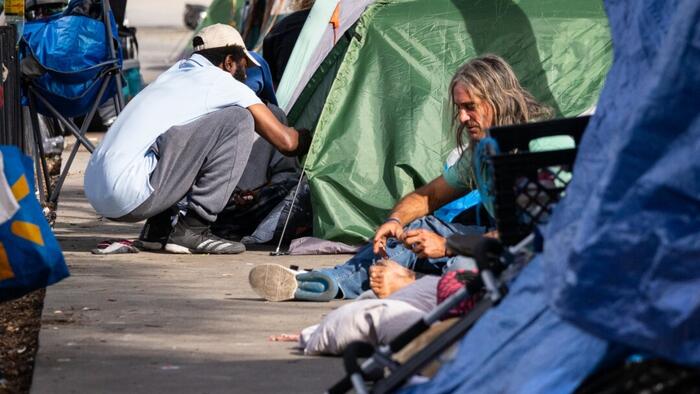The Trump administration recently enacted a significant executive order aimed at tackling the pervasive issue of homelessness across the nation, specifically targeting individuals grappling with mental illness or drug addiction. This directive signals a notable shift in federal strategy, advocating for the re-establishment of facilities designed to house and treat those facing such severe challenges, a move that has ignited considerable public and political discourse regarding homelessness policy.
At the core of the administration’s rationale is the assertion that chronic homelessness is frequently exacerbated by untreated addiction and mental health conditions, which, in turn, contribute to rising safety concerns within urban environments. The White House highlighted that previous administrations witnessed a substantial increase in individuals experiencing homelessness, underscoring the urgency of a renewed approach to this complex social issue.
The executive order, formally titled “Ending Crime and Disorder on America’s Streets,” explicitly directs local governments to reallocate homeless individuals towards “long-term institutional settings for humane treatment through the appropriate use of civil commitment.” Furthermore, it mandates cabinet heads to prioritize financial resources for cities actively working to curtail open drug use and street encampments, framing these actions as critical steps toward restoring public order.
Specific provisions of the Trump Executive Order include tasks for key officials like Attorney General Pam Bondi and Secretary of Health and Human Services Robert Kennedy Jr., to identify and seek the reversal of any federal, state, or local policies that impede the commitment of individuals with severe mental incapacity or addiction to suitable facilities. This emphasizes a return to institutional care as a central tenet of the proposed solution for the drug addiction crisis and mental health treatment challenges.
Despite the administration’s stated aims of compassion and safety, the order has faced sharp criticism from various advocacy groups. The National Homelessness Law Center, for instance, issued a strong statement asserting that the order “deprives people of their basic rights and makes it harder to solve homelessness.” Their concerns revolve around the increased reliance on policing and institutionalization, along with the potential redirection of funding away from existing programs that are deemed vital for harm reduction and saving lives.
Critics also argue that the order’s structure could inadvertently exacerbate the homelessness crisis by potentially cutting off financial support for crucial current initiatives. The National Coalition for the Homeless corroborates this sentiment, identifying the scarcity of affordable housing and limited government-funded housing assistance programs as the primary drivers of contemporary homelessness, suggesting the executive order fails to address these fundamental economic factors contributing to urban issues.
Historically, the mid-20th century saw a significant move away from large institutions and asylums, largely due to issues of overcrowding, underfunding, and documented abuse, leading to the deinstitutionalization movement. While subsequent legislation, like the 1963 Community Mental Health Act, aimed to replace these large facilities with smaller community centers, insufficient long-term funding often left many mentally ill or challenged individuals without adequate support, frequently leading them to homelessness.
This historical context reveals a complex societal challenge, with a later trend known as “transinstitutionalization” emerging between 1980 and 2000, where many individuals previously housed in psychiatric institutions found themselves entering the criminal justice system. This shift contributed notably to incarceration rates, highlighting the intricate interplay between social welfare policies, mental health care, and the justice system in managing vulnerable populations.






Leave a Reply